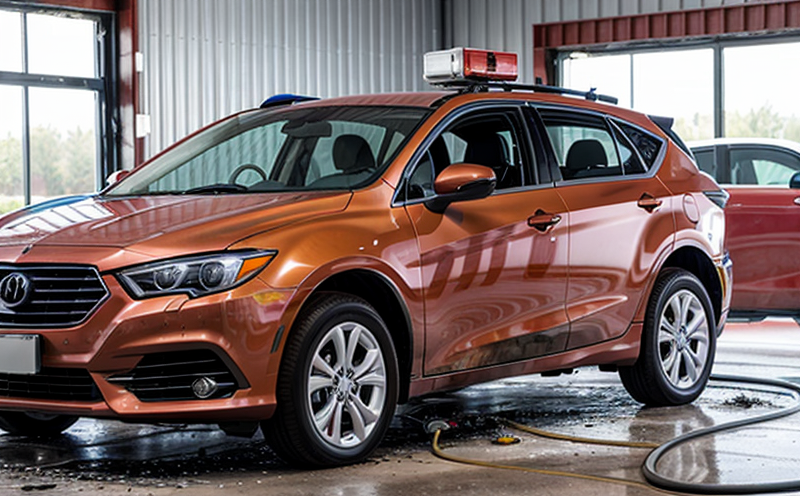Fire Resistance Testing of Seat Upholstery Materials
The fire resistance testing of seat upholstery materials is a critical aspect in automotive safety. As vehicles become more complex and the use of synthetic materials increases, ensuring these materials do not contribute to the spread or intensity of fires is paramount. This testing ensures that seats within an automobile can withstand exposure to flames without compromising passenger safety.
Fire resistance tests are conducted under controlled laboratory conditions to simulate real-world scenarios where a seat might come into contact with fire sources such as cigarette burns, engine malfunctions, or electrical faults. The primary goal is to evaluate the material’s ability to resist ignition and prevent the spread of flames, ensuring that it provides a safe environment for occupants.
The automotive sector places significant emphasis on fire resistance testing due to stringent regulations aimed at enhancing vehicle safety. Compliance with standards such as ISO 16920:2008 and ASTM E724-17 ensures that manufacturers meet these requirements, thereby protecting consumers from potential hazards.
During the test, materials are exposed to controlled heat sources for a specified duration, typically 3 minutes. The performance is then evaluated based on several criteria including flame spread rate, smoke density, and char formation. These tests not only assess the immediate fire resistance but also evaluate the material's long-term stability under high-temperature conditions.
Material preparation involves cutting uniform samples of the upholstery according to standard dimensions. The specimens are then mounted in a holder that allows for consistent heat application while ensuring accurate measurement of flame spread and other parameters.
The fire resistance testing apparatus commonly includes a heated cabinet with controlled airflow, designed to simulate actual vehicular environments. This equipment ensures that tests accurately reflect real-world conditions, providing reliable data for decision-making processes in the design and manufacturing stages.
Why It Matters
The importance of fire resistance testing cannot be overstated. In an automotive context, seat upholstery is one of the first components to come into contact with a potential ignition source. Ensuring that these materials can withstand such exposure without compromising safety is crucial for both passenger protection and compliance with international standards.
- Reduces risk of fire-related injuries or fatalities during vehicle accidents.
- Avoids costly recalls due to non-compliance with stringent regulations.
- Enhances brand reputation by demonstrating commitment to safety and quality.
The automotive industry is highly regulated, especially in regions like North America and Europe. Compliance with standards like ISO 16920:2008 and ASTM E724-17 ensures that manufacturers meet these stringent requirements, thereby protecting consumers from potential hazards.
Non-compliance can lead to severe consequences including legal actions, fines, and reputational damage. Therefore, investing in thorough fire resistance testing is not just a compliance measure but also a strategic business decision aimed at safeguarding lives and enhancing product reputation.
Scope and Methodology
| Parameter | Description |
|---|---|
| Test Specimens | Uniform samples of seat upholstery materials, cut to standard dimensions. |
| Heated Cabinet Setup | Cabinet with controlled heat and airflow conditions simulating vehicular environments. |
| Flame Application | Application of controlled flame sources for a specified duration (typically 3 minutes). |
| Data Collection | Measurement of flame spread rate, smoke density, char formation, and other relevant parameters. |
The testing process involves subjecting the prepared samples to controlled heat sources for a set duration. The performance is then evaluated based on several key indicators including flame spread rate, smoke density, and char formation. These metrics provide valuable insights into the material's fire resistance capabilities.
Quality and Reliability Assurance
- Conducting tests in a controlled environment to ensure consistent results.
- Implementing rigorous quality control measures during sample preparation and testing.
The laboratory adheres strictly to international standards such as ISO 16920:2008 and ASTM E724-17, ensuring that all tests are conducted with precision and accuracy. The reliability of the test results is further enhanced by regular calibration of equipment and training of personnel.
Quality assurance measures include independent audits and continuous monitoring to ensure compliance with established protocols. This commitment to excellence ensures that the laboratory provides accurate, reliable, and actionable data for its clients.





